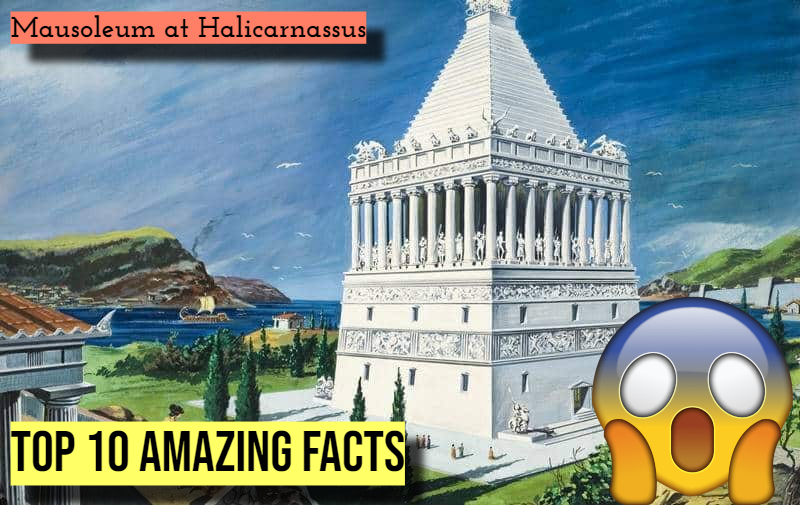The Mausoleum at Halicarnassus, one of the Seven Wonders of the Ancient World, was a grand and influential tomb located in Halicarnassus (modern-day Bodrum, Turkey). Here are top 10 amazing facts about the Mausoleum:

- Commissioned by Artemisia: The Mausoleum was commissioned by Artemisia II as a tribute to her husband, Mausolus, the ruler of Caria. After Mausolus’s death in 353 BCE, she wanted to honor him with a grand tomb.
- The Origin of the Term “Mausoleum”: The term “mausoleum” derives from Mausolus’s name. His grand tomb became the prototype for other large and elaborate tombs and was subsequently called a “mausoleum.”
- A Blend of Architectural Styles: The Mausoleum featured a blend of Greek, Egyptian, and Lycian architectural elements, making it a unique and innovative construction for its time.
- Designed by Famous Architects and Sculptors: The Mausoleum was designed by the Greek architects Satyros and Pythius, with sculptures by renowned artists such as Leochares, Bryaxis, Scopas of Paros, and Timotheus.
- Impressive Height: The structure is believed to have been about 45 meters (148 feet) tall, making it one of the tallest buildings of its time.
- Decorated with Statues: The Mausoleum was adorned with various statues and carvings depicting scenes from Greek mythology, particularly battles such as the Greek-Amazonian and Greek-Centaur battles.
- Earthquake Destruction: The Mausoleum survived for many centuries, but it was eventually destroyed by a series of earthquakes in the Middle Ages (between the 12th and 15th centuries).
- Used for Building Material: The remains of the Mausoleum were used as a source of building material during the construction of the Castle of St. Peter in Bodrum in the 15th century.
- Rediscovered by Archaeologists: The ruins of the Mausoleum were rediscovered in the mid-19th century by archaeologist Charles Thomas Newton, who excavated the site and transported many artifacts to the British Museum.
- Legacy and Influence: The Mausoleum had a lasting impact on later architectural designs, influencing the construction of other grand tombs, such as the Tomb of Hadrian in Rome. It continues to be an inspiring example of ancient art and architecture.
Despite its demise, the Mausoleum at Halicarnassus remains a fascinating and iconic monument in history.




